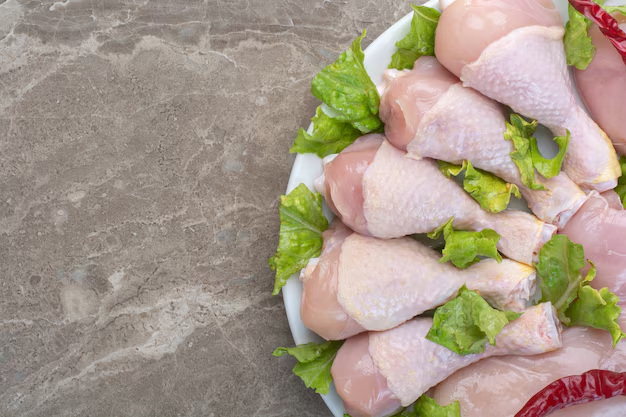How Long Can You Keep a Turkey Carcass in the Refrigerator: Safety Tips and Guidelines
Thanksgiving and holiday feasts often revolve around a perfectly roasted turkey. After enjoying the festive meal, you might find yourself with an abundance of leftovers and a prominent turkey carcass. Maximizing every part of this bird not only minimizes waste but also allows you to enjoy delicious soups and stocks later. However, how long is that turkey carcass good in the refrigerator? Let’s explore this from various angles, focusing on safe food storage practices and prolonging the shelf life of your leftover bird.
🦃 Understanding Food Safety and Turkey Storage
Food safety is paramount when it comes to leftovers, especially poultry. Storing a turkey carcass correctly can prevent foodborne illnesses and ensure that every part of the turkey is utilized safely.
The Safe Timeline: How Long Can It Stay?
A cooked turkey carcass is best kept in the refrigerator for up to 3 to 4 days. This general rule is part of wider food safety guidelines that apply to cooked poultry. The time span allows you to incorporate leftovers into other meals or prepare stock while minimizing the risk of bacterial growth.
Refrigeration Best Practices
Immediate Storage: Promptly refrigerate the turkey carcass within two hours of cooking to ensure safety.
Temperature Matters: Ensure the refrigerator is set to 40°F (4°C) or below, as this temperature slows bacterial growth.
Airtight Containers: Store the carcass in a well-sealed container or wrap it tightly in aluminum foil or plastic wrap to prevent air exposure, which can accelerate spoilage.
Sections Are Better: If possible, break down the carcass into smaller portions. This helps in faster and more even cooling, ensuring the whole carcass is stored at a safe temperature.
🌡️ Recognizing Signs of Spoilage
Turkey is susceptible to spoilage, which may lead to unpleasant odors and taste changes. Here's what to watch for:
- Odor: An off-putting, sour smell indicates spoilage.
- Texture: If the carcass or residual meat feels slimy, it's a sign of bacterial growth.
- Color Changes: Any discoloration or mold formation means the turkey carcass is unsafe to use.
When in doubt, throw it out. It's better to err on the side of caution to avoid potential health risks.
🍲 Making the Most of Leftover Turkey Carcass
Once you know how long you can safely store a turkey carcass, the next step is finding delicious ways to make the most of what remains.
Homemade Turkey Broth
One of the richest ways to use a turkey carcass is in making a hearty broth. Here's a simple guide to crafting a savory stock:
Ingredients You’ll Need: Turkey carcass, fresh vegetables (like onions, carrots, and celery), herbs (such as thyme, bay leaves, and parsley), and water.
Preparation:
- Break apart the carcass so it fits into a large pot.
- Add chopped vegetables and herbs.
- Cover everything with water (about 12 cups).
Cooking:
- Bring to a boil, then simmer for approximately 3 to 4 hours.
- Skim off any foam or fat that rises to the top.
Straining and Storing:
- Use a fine mesh strainer to separate solids from the liquid.
- Cool and store in airtight containers or freezer bags.
Freezing for Future Use
For longer storage, freezing turkey carcasses, or their broth, is an excellent option. Properly stored, they can last in the freezer for up to 3 months.
- Tips for Freezing:
- Let the broth cool completely before freezing.
- Use freezer-safe containers or bags, leaving space for expansion.
- Label with a date for easy tracking.
🗓️ A Practical Guide: Turkey Carcass Storage Tips
Here's a quick reference guide for safely managing your turkey leftovers:
| Step | Action | Timeframe |
|---|---|---|
| Immediate Action | Refrigerate the cooked turkey carcass promptly. | Within 2 hours of cooking. |
| Refrigerator Storage | Store at 40°F (4°C) or below, in airtight containers. | Use within 3 to 4 days. |
| Check for Spoilage | Look for unpleasant odors, slime, or color changes. | Throw away immediately if spoilage signs appear. |
| Turning Carcass to Broth | Utilize within the safe refrigeration window to make rich turkey broth. | Approximately 3 to 4-hour prep time. |
| Freezing Options | Freeze broth or turkey remnants for extended storage. | Ideally used within 3 months. |
🕵️♀️ Expanding Your Knowledge: Food Storage Fundamentals
Understanding how to handle your turkey carcass is just one part of broader food storage knowledge that can minimize waste and boost meal planning.
General Refrigeration Tips
- Organize for Access: Keep older food items at the front to ensure they're used first.
- Rotation System: Move newly added items to the back, rotating existing items forward.
- Check Temperatures Regularly: Ensure the appliance maintains a constant, safe temperature.
Integrating Turkey Leftovers in Meal Planning
Turkey meat and broth can enrich various recipes, from soups to casseroles. Engaging in meal planning with an eye towards minimizing waste:
- Menu Ideas: Use leftover turkey meat in sandwiches, salads, or as part of a mixed protein dish.
- Batch Cooking: Make larger quantities of dishes that can be frozen and reheated later.
Insights for the Conscientious Cook
Mastering the safe and efficient use of your turkey carcass involves understanding food safety basics, recognizing spoilage signs, and exploring creative culinary uses. While the Thanksgiving feast may center around the freshly roasted bird, the potential for savoring every last part of that turkey lies in your hands. With proper care, mindfulness, and a hint of culinary curiosity, your holiday turkey can extend its life beyond the dining room table, enriching meals and providing nourishment. Happy cooking!
